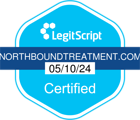Pain is an uninvited guest that barges into our lives unannounced. Whether it’s a nagging ache or an excruciating throb, pain is an unavoidable part of the human experience. In the pursuit of relief, many find themselves at the crossroads of pain management and the potential hazards of oxycodone addiction.
Read on to understand this complex intersection, where the search for relief meets the challenges of dependence.
The Opioid Oasis
Enter oxycodone, a powerful opioid that promises respite from even the most relentless pain. Prescribed for conditions ranging from post-surgery recovery to chronic pain, oxycodone is the knight in shining armor for those battling discomfort. But beware, for in the realm of opioids, the line between savior and saboteur is razor thin.
Pain Management
Pain management specialists find themselves in a constant dance, choreographing relief while avoiding the pitfalls of addiction. It’s a tricky tango, and the stakes are high. The challenge lies in balancing the legitimate need for pain relief with the ever-present risk of dependency. It’s like trying to juggle flaming torches—one misstep, and things can quickly spiral out of control.
Subjectivity in Pain Perception
Pain is as subjective as taste in music. What feels like a dull ache to one person might be an insufferable torment for another. This subjectivity makes it challenging to create a one-size-fits-all approach to pain management. The lack of a universal pain meter means healthcare providers must rely on patient feedback, making the process inherently nuanced.
The Slippery Slope
Oxycodone, with its potent pain-relieving properties, offers a glimmer of hope to those grappling with persistent pain. However, this very efficacy contributes to its potential for misuse. It’s a slippery slope—the same pill that eases suffering can become a silent saboteur, leading individuals down the treacherous path of addiction.
Patient Predicament
Caught in the crossfire are the patients—individuals seeking refuge from the clutches of pain but wary of the lurking specter of dependency. It’s a predicament that requires a delicate balance between empathy and caution. Patients must be active participants in their pain management journey, openly communicating with healthcare providers about their experiences and concerns.
Strategies for Safer Pain Management
Healthcare providers today are adopting strategies to ensure safer pain management. This includes closely monitoring patient responses, exploring alternative pain management approaches, and incorporating non-opioid medications when possible. Education plays a crucial role in empowering patients with knowledge about the risks associated with oxycodone and the importance of adhering to prescribed dosage guidelines.
Navigating the Maze
The intersection of pain management and opioid addiction is akin to navigating a maze where each turn presents a new challenge. It requires a collaborative effort among healthcare providers, patients, and society at large to strike the right balance. Pain, though inevitable, doesn’t have to be a perpetual battleground. By fostering open communication, embracing alternative approaches, and prioritizing education, we can pave a path toward effective pain management without succumbing to the pitfalls of opioid dependency. It’s a journey worth taking, one step at a time.
Visit the Northbound Addiction Treatment Center in Newport Beach to explore compassionate and effective addiction treatment programs. Our services are tailored to meet your needs, and our safe space ensures a speedy recovery. Contact us now, and let us be your partner in this life-changing journey.










